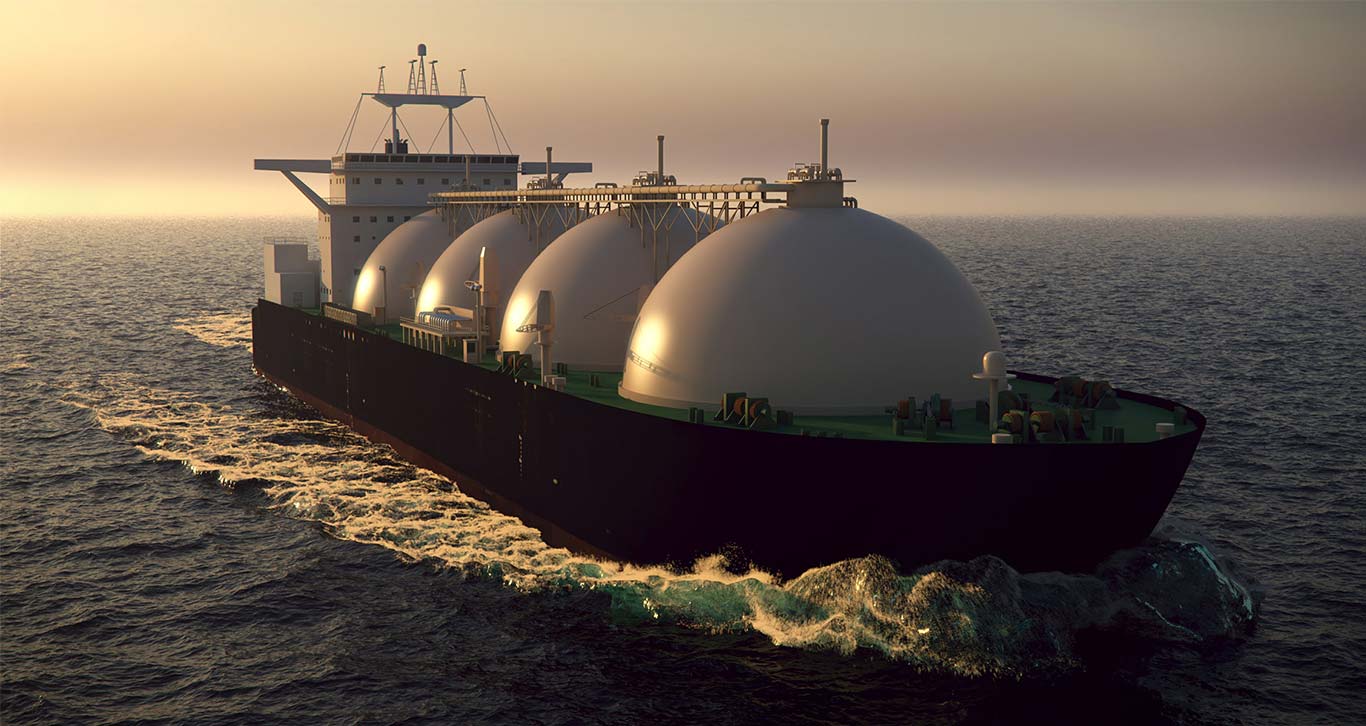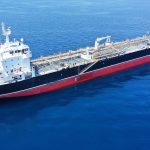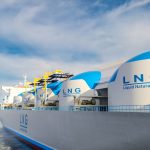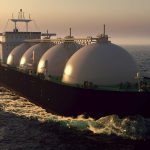

Market Trends in LNG Tanker Sales: What Buyers and Sellers Should Know
The landscape of LNG tanker sales is rapidly evolving due to shifts in global energy demands and environmental policies. For buyers and sellers in the LNG industry, understanding these trends is crucial to making informed decisions that can significantly impact profitability and operational efficiency.
This article will explore key market trends, including fluctuations in pricing, rising demand for LNG, and current fleet conditions. These factors influence not only the timing of purchases and sales but also the strategic positioning of stakeholders within the industry. By staying informed, participants can better navigate the complex market dynamics, optimize their investment strategies, and adapt to the changing environment of LNG transportation. Understanding these trends empowers both buyers and sellers to capitalize on opportunities and mitigate risks in an increasingly competitive market.
Price Trends
Current pricing trends for LNG tankers illustrate significant fluctuations driven by several key market factors. Material costs have surged, with shipbuilders facing rising steel prices and increased expenses for specialized components. As a result, the construction cost for new LNG tankers has risen sharply, often exceeding $210 million per vessel in 2023.
Additionally, shipyard backlogs contribute to rising prices for new tankers. With ongoing delays in construction linked to pandemic-related supply chain disruptions, demand continues to outstrip supply, pushing prices higher. As of October 2023, some shipyards report waiting times extending to three years for LNG tanker deliveries.
In major shipbuilding nations like South Korea, Samsung Heavy Industries, Mitsubishi Heavy Industries, and Kawasaki Heavy Industries are significant players in LNG tanker production, and their backlogs are affecting global pricing. This has pushed demand to other markets, including North America and South America.
Conversely, the used LNG tanker market is also affected. As new tanker prices climb, buyers may turn to second-hand vessels, which see increased demand. For instance, the price for a five-year-old LNG tanker now hovers around $150 million, up from $120 million in early 2022.
These trends show a clear correlation between market dynamics and LNG tanker prices, affecting both new builds and existing vessels significantly.
Demand Fluctuations
Global demand for LNG tankers has exhibited significant fluctuations influenced by geopolitical factors and seasonal energy consumption patterns. Geopolitical tensions, such as conflicts in Europe or trade disputes in Asia, have led to increased demand for LNG as countries seek energy security and diversification away from traditional suppliers. For example, the conflict in Ukraine has prompted European nations to accelerate their LNG imports from alternative suppliers, directly increasing the need for LNG tankers.
Seasonal energy demands also play a critical role; winter months typically see a surge in LNG consumption for heating purposes. In 2022, a particularly cold winter in northern Asia spurred heightened LNG imports, further straining tanker availability. Additionally, global shifts toward renewable energy and the implementation of emissions regulations influence consumption patterns, driving fluctuations in tanker demand.
Regions like the Middle East, Saudi Arabia, and Asia Pacific are key contributors to these fluctuations, as they serve as both major producers and consumers in the LNG trade. Overall, as emerging markets seek to meet their energy needs and established economies adjust to changing geopolitical landscapes, the LNG tanker market will continue to experience variability in demand, shaped by these interconnected factors.
Fleet Availability
The current availability of LNG tankers significantly influences market trends, particularly in the context of fleet dynamics. As of now, both new and used LNG tankers are experiencing shortages due to heightened demand and shipyard delays caused by supply chain disruptions and labor shortages. This situation results in limited new builds entering the market.
The secondary market, which includes older vessels, faces its own challenges, as many operators opt to retain their fleets to hedge against rising charter rates. This scarcity of tankers constricts market fluidity and increases competition among buyers.
Limited availability of LNG tankers drives up prices, with charter rates reaching unprecedented levels in recent months. Shipowners capitalize on the high demand, leading to increased operational costs, which are often passed on to consumers. Consequently, market pressures intensify as companies seek to secure scarce shipping capacity, ultimately influencing LNG pricing and global supply chain dynamics. The interplay of these factors underscores the critical role of fleet availability in shaping market conditions.
Age and Condition of LNG Tankers
The age and condition of LNG tankers significantly influence their resale value and operational efficiency. Generally, newer tankers command higher prices due to advanced technology, improved fuel efficiency, and compliance with current environmental regulations. For example, modern LNG tankers incorporate features such as enhanced propulsion systems and better insulation, leading to reduced operational costs and lower emissions.
In contrast, older vessels may incur higher maintenance expenses and may not adhere to newer regulatory standards. Buyers should carefully assess the condition of an LNG tanker by examining its maintenance history, hull integrity, and compliance with safety regulations. A thorough inspection can reveal potential issues, such as corrosion, which could affect both safety and market value.
For buyers seeking to invest in LNG tankers, evaluating a vessel’s age alongside its overall condition is critical. This assessment ensures informed purchasing decisions and helps predict future expenses, thereby maximizing the investment’s potential return.
Environmental Regulations
Environmental regulations are significantly shaping the LNG tanker sales market, particularly through the implementation of International Maritime Organization (IMO) emissions standards. These regulations enforce stringent emissions limits on nitrogen oxides (NOx) and sulfur oxides (SOx), prompting a shift from older, less efficient vessels to modern, compliant designs.
As a result, older LNG tankers that do not meet these standards face reduced market value and increased operational costs, effectively making them less attractive to buyers. In contrast, newer vessels equipped with advanced technologies, such as dual-fuel propulsion systems, command higher resale prices due to their compliance capabilities and operational efficiency.
The use of membrane type LNG tankers, known for their efficiency and cargo capacity, is also becoming more prevalent, particularly in regions with strict emissions regulations. Compliance with current and future regulations is essential for maintaining asset value. Buyers should focus on acquiring LNG tankers that meet or exceed IMO standards, ensuring their investments are safeguarded against regulatory obsolescence. Investing in compliant vessels not only enhances environmental responsibility but also protects against potential financial losses in a market increasingly driven by sustainability imperatives.
New Technology Integration
New technology significantly influences LNG tanker sales by enhancing vessel efficiency, making modern tankers more attractive to buyers. Dual-fuel engines are at the forefront of this innovation, allowing vessels to use both LNG and traditional fuels, thereby improving fuel efficiency and reducing emissions. This adaptability meets stringent environmental regulations, increasing appeal to environmentally conscious buyers.
Automation technologies streamline operations, improving safety and reducing crew costs. Advanced navigation and monitoring systems enable real-time data analysis, optimizing route planning and fuel consumption, further enhancing operational efficiency.
As vessels equipped with these technologies become prevalent, pricing dynamics shift. Buyers are willing to invest in modern, efficient tankers, leading to increased market demand for high-tech options. Consequently, vessels featuring cutting-edge technology often command higher prices, reflecting their added value in operational savings and environmental compliance.
In summary, the integration of advanced technologies in LNG tankers not only enhances efficiency but also reshapes buyer preferences, influencing pricing and driving demand in the market.
Buyer Considerations
When purchasing an LNG tanker, buyers should prioritize the following factors to ensure a sound investment:
- Timing and Market Conditions: Monitor global LNG supply and demand trends. Purchase during a buyer’s market, typically characterized by lower prices and increased vessel availability.
- Vessel Condition and Specifications: Evaluate the tanker’s age, maintenance history, and compliance with the latest regulations. Opt for vessels with advanced fuel efficiency technology to reduce long-term operational costs.
- Long-Term Cost of Ownership: Consider not only the purchase price but also ongoing expenses. Assess fuel efficiency to lower operating costs, and plan for regular maintenance to extend the vessel’s lifespan.
- Price Negotiation: Use market data and vessel inspections to leverage negotiations. Identify comparable vessel sales to establish fair pricing during negotiations.
- Tailored Selection: Choose a tanker that meets your specific operational needs, including storage capacity and intended routes, ensuring optimal performance for your business model.
By focusing on these key considerations, buyers can navigate the LNG tanker market effectively and maximize their investment.
Seller Considerations
When listing LNG tankers, sellers should strategically consider several key factors to maximize their vessel’s value.
Timing the market is crucial. Monitor LNG market trends and demand fluctuations to identify optimal sale windows. Selling during periods of high demand can significantly enhance sale prices.
Transparency is essential for building buyer confidence. Maintain detailed and accessible maintenance records and compliance certifications. Preemptive disclosures regarding a tanker’s operational history can mitigate doubts and expedite the sale process.
Furthermore, upgrades and refurbishments can substantially boost a tanker’s market value. Implementing advanced technologies or enhancing vessel efficiency can make the tanker more appealing to potential buyers. Focus on upgrades that meet current regulatory standards and address environmental concerns, as these factors are increasingly influencing buyer decisions in the LNG sector.
By strategically addressing these considerations, LNG tanker sellers can position their vessels favorably in the market, ultimately leading to increased sale prices and successful transactions.
LNG Shipyards and New Builds
Current shipyard backlogs significantly influence the LNG ship resale market. As of late 2023, global shipyards face considerable delivery delays, with many LNG tanker orders scheduled into 2025 and beyond. This backlog constrains the supply of new LNG tankers, limiting options for buyers and increasing competition for available vessels in the resale market.
The limited availability of new builds tends to drive resale prices upward, as potential buyers seek immediate solutions. Consequently, resale values may rise, reflecting the scarcity of new vessels. Current market dynamics suggest that secondary market pricing will remain elevated unless the balance between new builds and resale supply is restored.
Predictions indicate that shipyard capacity may finally begin to align with demand by 2026, provided there are no further disruptions in production. If shipyards can ramp up construction and fulfill existing orders, the influx of new LNG tankers could normalize pricing and broaden availability in the resale market, stabilizing conditions for buyers and sellers alike.
Impact of Geopolitics
Geopolitical events significantly influence LNG tanker sales by altering shipping routes and increasing risks in the energy market. For example, ongoing conflicts in regions such as the Middle East and Eastern Europe can disrupt traditional shipping lanes, leading to increased shipping costs and uncertainties. The 2022 Russian invasion of Ukraine triggered widespread sanctions on Russian gas exports, prompting buyers to seek alternative suppliers and impacting LNG tanker demand.
Trade sanctions can create new dynamics, making some regions less accessible, while increasing reliance on others. In response to these challenges, buyers and sellers are adopting strategies to mitigate risks, such as diversifying sourcing options to avoid over-dependence on any single region. Additionally, investments in more flexible tanker fleets allow companies to adapt quickly to changing geopolitical landscapes, ensuring continued access to global markets.
Ultimately, understanding the interplay between geopolitical events and LNG tanker sales is essential for market participants aiming to navigate the complexities of international energy trade effectively.
Market Forecast for LNG Tankers
The LNG tanker sales market is poised for significant growth, driven primarily by escalating global demand for liquefied natural gas. By 2025, the global LNG demand is expected to surpass 500 million tons annually, increasing the need for efficient and specialized tanker fleets. This surge will prompt a corresponding rise in LNG tanker sales as operators seek to expand their transportation capabilities.
Technological advancements, including the development of more fuel-efficient and eco-friendly tankers, will play a crucial role in shaping the market. Innovations such as dual-fuel engines and digital tracking systems will enhance operational efficiency while adhering to stringent environmental regulations, particularly the International Maritime Organization’s (IMO) emissions targets.
Furthermore, the market may witness a shift towards smaller, modular LNG tankers, catering to niche markets and regional trade routes. As the energy landscape evolves, increasing investment in LNG infrastructure will support the proliferation of these vessels. Overall, the LNG tanker sales market is expected to substantially expand in the coming years, aligning with global energy transitions and the growing role of natural gas in reducing carbon emissions.
Fleet Maintenance and Refurbishments
Maintenance history significantly impacts the resale value of LNG tankers. A well-documented maintenance record demonstrates the vessel’s condition and reliability to potential buyers. Tankers with consistent maintenance show fewer mechanical failures, leading to increased operational efficiency and safety.
Common refurbishments that enhance a vessel’s desirability include hull repairs, engine overhauls, and upgrades to newer navigation technologies. Implementing energy-efficient systems and ensuring compliance with the latest environmental regulations can also boost a tanker’s value.
Buyers should meticulously assess maintenance records, looking for documented service intervals, inspections, and any upgrades made. Engaging a marine surveyor can provide an in-depth evaluation of the tanker’s condition to ensure it meets current industry standards. By prioritizing vessels with comprehensive maintenance histories and modernization efforts, buyers can make informed decisions that secure better long-term investments.
Conclusion
In conclusion, the LNG tanker market is witnessing significant trends, including increased demand for cleaner energy, advancements in technology, and a shift toward larger vessels for better efficiency. Buyers should prioritize understanding these market dynamics and consider the long-term benefits of investing in modern, eco-friendly vessels. Sellers must focus on showcasing their tankers’ technological advantages and sustainability features to attract buyers in a competitive landscape.
To make informed decisions, buyers and sellers should stay updated on market reports and engage with industry experts. Conducting thorough research will provide valuable insights into pricing, financing options, and emerging trends. For those interested in LNG tanker sales, further consultation is recommended to navigate this evolving market effectively. Understanding these elements will empower stakeholders to capitalize on opportunities and achieve successful outcomes in the LNG tanker sector.
Related posts


LNG Tanker Valuation: What Influences the Sale Price?

Buy and Sell Offshore Vessels






